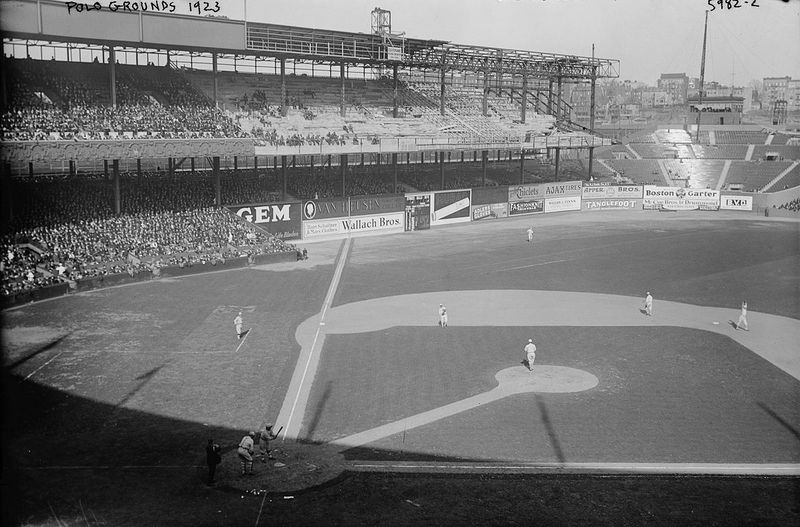4. Polo Grounds
 Polo Grounds in 1923. Image via Library of Congress Prints and Photographs Division
Polo Grounds in 1923. Image via Library of Congress Prints and Photographs Division
The Polo Grounds was opened in 1911 in Upper Manhattan and throughout its tenure was home to the New York Yankees, the New York Giants, as well as the football teams of the New York Giants and New York Jets.
Polo Grounds was actually the name given to multiple ballparks dating back to the late 1800s after the sport of polo, but most historians and common fans refer to the stadium that opened in 1911.
From its official opening to its last days as one of New York City’s great ballparks, the stadium was home to the the New York Giants baseball team and eventually became one of the most beloved, and unique, stadiums in the history of baseball. The Polo Grounds hosted twelve World Series and two All-Star games, and was the location for Willie Mays’ most famous catch in the history of sports.
The Polo Grounds was perhaps most notably known for its odd dimensions and extremely long center field. The distance from home plate to the center field fence was 475 feet, making it one of the longest in baseball history.
The stadium was closed in 1963, after the Giants announced in 1957 their move to San Francisco, and after the new expansion, the New York Mets played in the Polo Grounds until Shea Stadium was completed. The final game was played on September 18, 1963 and the stadium was torn down the following April.
Today, unfortunately like many demolished sports stadiums, very little remains to commemorate the location and history of the field. Several housing projects now stand where the Polo Grounds once drew in thousands of fans, and a plaque is located at the approximate location of home plate. In addition to the plaque commemorating the park, a long staircase from Coogan’s Bluff down to the Polo Grounds was rebuilt in 2015.
Access the site via the Brush Stairway on Edgecombe Avenue from Coogan’s Bluff down to the Harlem River Driveway.





